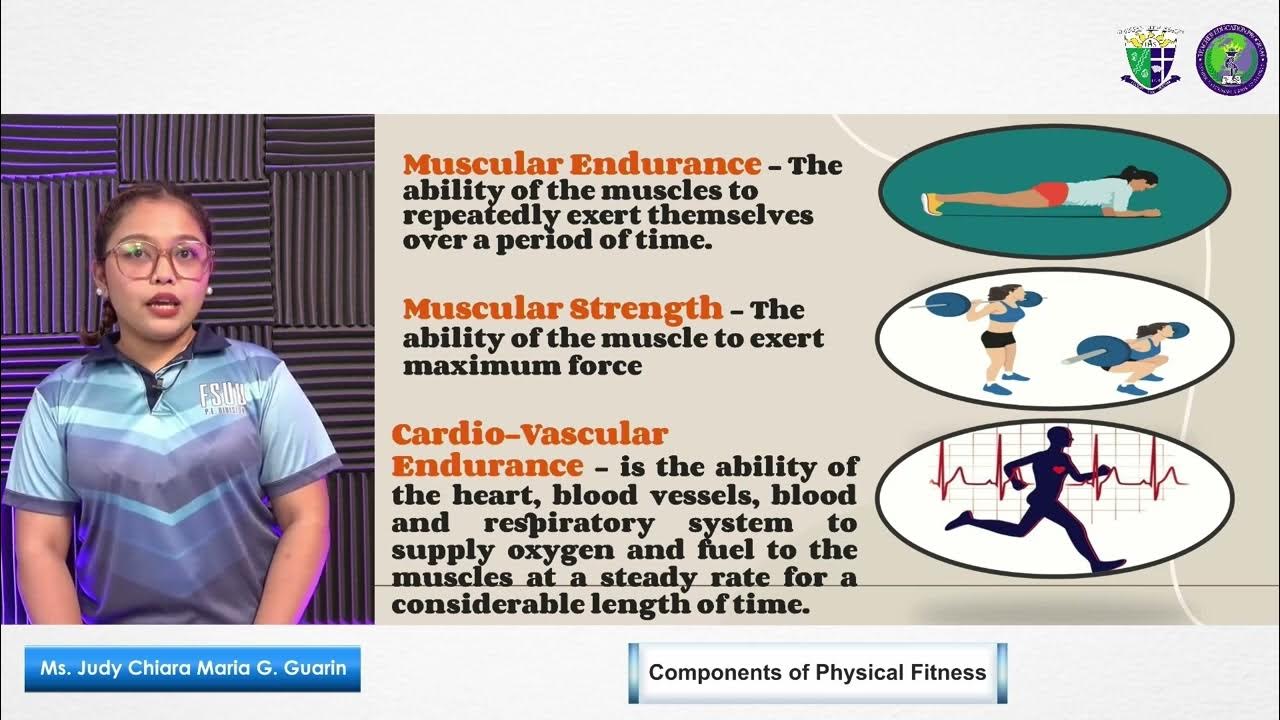Skill related components of fitness
Summary
TLDRThis video explores the skill-related components of fitness and their relationship to movement efficiency, focusing on power, speed, agility, coordination, balance, and reaction time. It explains how these components, often sport-specific, contribute to an athlete's performance and how they interact to improve movement efficiency. The video delves into each component's role, offering insights on how they can be tested and how they impact athletic performance. It highlights the importance of sport-specific testing and emphasizes that movement efficiency relies on the integration of multiple components.
Takeaways
- 😀 Skill-related components of fitness are sport-specific and relate to the development and execution of skills in performance.
- 😀 Power is the amount of work done in a particular time and is essential for acceleration, especially in time-dependent sports.
- 😀 Speed is the rate at which an object moves, and it's crucial for performance in races but can cause fatigue quickly due to high energy use.
- 😀 Reaction time is the speed at which an athlete responds to an external stimulus, vital in sports requiring quick responses, though not directly related to movement efficiency.
- 😀 Balance is the ability to control one's body position, essential for movement efficiency, and can be tested through static or dynamic tests like the stork or T-test.
- 😀 Agility combines speed, power, balance, and reaction time, and contributes to movement efficiency by enabling athletes to change direction rapidly without losing balance.
- 😀 Coordination refers to the body's ability to perform smooth, efficient movements by combining multiple actions into a fluid sequence, crucial for good biomechanics and movement efficiency.
- 😀 Fine coordination involves small muscle groups (e.g., snooker), while gross coordination deals with large muscle groups (e.g., running or jumping).
- 😀 Testing of skill-related components is not always a great predictor of performance as it must be sports-specific, and often, multiple components of fitness are involved in performance.
- 😀 To test agility effectively, an unknown stimulus is needed, as pre-known stimuli don't provide an accurate measure of agility.
- 😀 Performance and movement efficiency are improved when the athlete has a better combination of coordination, agility, balance, and reaction time, all contributing to the overall effectiveness in their sport.
Q & A
What are the skill-related components of fitness discussed in the video?
-The skill-related components of fitness discussed are power, speed, agility, coordination, balance, and reaction time.
How does speed contribute to athletic performance?
-Speed is crucial for performance in races or events like the 100-meter sprint or 50-meter swimming sprints. It allows athletes to cover distances quickly but requires high energy, leading to rapid fatigue.
What is the relationship between power and speed in sports performance?
-Power is the combination of strength and speed, crucial for acceleration. It is required in many sports for quick movements and short bursts of activity, like in races, and is tested through exercises like the standing long jump or seated throw.
What is the significance of reaction time in athletic performance?
-Reaction time is the speed at which an athlete responds to an external stimulus, essential in races and sports where athletes need to quickly react to opponents' movements. However, it does not significantly impact movement efficiency.
What is the difference between static and dynamic balance?
-Static balance refers to the ability to maintain control of the body’s position while not moving, whereas dynamic balance is maintaining control while moving. Both are important for movement efficiency and performance in sports.
How does agility combine multiple fitness components?
-Agility is a combination of speed, power, balance, and reaction time. It allows athletes to change direction quickly and efficiently, helping to conserve energy and improve performance, especially in response to a stimulus such as an opponent or moving object.
Why is coordination important for movement efficiency?
-Coordination allows athletes to perform smooth and efficient movements by combining different body parts into a single fluid motion. Better coordination leads to better movement efficiency, as it minimizes energy wastage and improves biomechanics.
What is the difference between fine and gross coordination?
-Fine coordination involves small, precise muscle movements, such as in snooker or darts, while gross coordination involves larger muscle groups, like in running or jumping, to create larger movements.
How are coordination and movement efficiency related?
-Better coordination generally leads to improved movement efficiency, as coordinated movements are smoother, require less energy, and reduce the risk of injury. Poor coordination often results in jerky, inefficient movement.
Why are sports-specific tests important for measuring fitness?
-Sports-specific tests are essential because they focus on the components of fitness directly related to an athlete's performance in their sport. General fitness tests may not provide accurate predictions of athletic performance, as they don’t always capture the skills and abilities needed for specific sports.
Outlines

This section is available to paid users only. Please upgrade to access this part.
Upgrade NowMindmap

This section is available to paid users only. Please upgrade to access this part.
Upgrade NowKeywords

This section is available to paid users only. Please upgrade to access this part.
Upgrade NowHighlights

This section is available to paid users only. Please upgrade to access this part.
Upgrade NowTranscripts

This section is available to paid users only. Please upgrade to access this part.
Upgrade NowBrowse More Related Video

MAPEH 9 (PHYSICAL EDUCATION VIDEO LESSON 1 - QUARTER 1)

Physical Fitness Components (HRF and SRF) | Physical Education 7 8 9 10 - 1st Quarter | Maam CJ

Brain Bites - Skill Related Fitness

COMPONENTS OF PHYSICAL FITNESS (PATHFIT 2)

P.E. (1st Quarter) Module 1 Lesson

What is Fitness: Health & Skill Fitness Components PE
5.0 / 5 (0 votes)